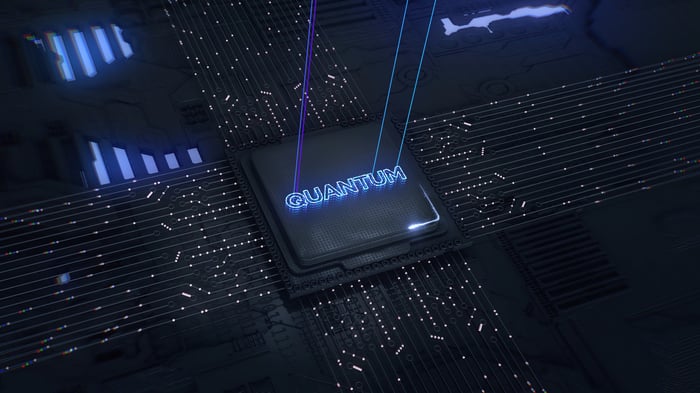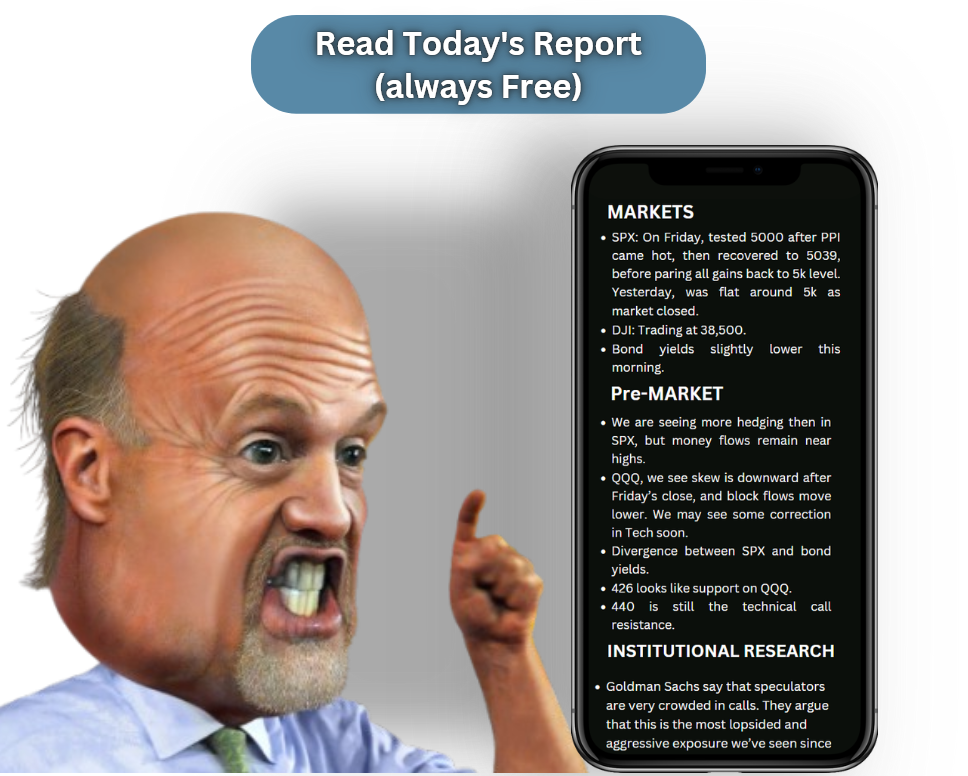The U.S. Federal Reserve kept the short-term Fed Funds Rate unchanged at the 5.25% to 5.50% level at the early May 2024 meeting. Inflation data over the past months, showing the economic condition above the central bank’s 2% target, curbed the Fed’s enthusiasm for rate cuts. Meanwhile, the Fed tossed the rate cut proponents a bone as it announced it would reduce quantitative tightening in June, taking pressure off rates further along the yield curve.
In a March 20, 2024, Barchart article on the next move in U.S. interest rates, I wrote:
I believe the Fed will eventually succumb to pressures to alter the 2% arbitrary inflation target and cut interest rates. However, higher-than-forecast inflation readings over the coming months could push bonds and the TLT lower, which could be a golden buying opportunity. I am a buyer of TLT and long bonds on dips and will take profits if rallies approach technical resistance levels of the four-year bearish trend at 134-14. If the Fed cuts rates over the coming months, before the election, all bets will be off as the bearish bond market trend will likely end. Until then, the bonds are a trading market, with the only factor that supports long-term investment the highest “risk-free” rates in years. On the other hand, traditional buyers from overseas hold less U.S. government debt because of the volatile geopolitical landscape.
On March 20, the nearby U.S. 30-year Treasury bond futures were at the 118-27 level. Since then, bonds moved lower, at around the 117-118 level they recovered from the late April low.
Bonds fell since early March
The high on the June U.S. 30-year Treasury bond futures was 122-13.

The chart illustrates the pattern of lower highs and lower lows that took the June long bond futures to a 112-27 low on April 25. Since then, bonds recovered, moving to the 116 level, with the short-term trend turning slightly bullish.
The Fed’s QT reduction caused a rally and trend shift
The inflation data over the past months proved challenging for the U.S. central bank as the economic condition remained above the 2% target. The Fed left the short-term Fed Funds Rate unchanged at the early May 2024 meeting, stating that it will continue to monitor inflation and only cut the rate when there is more evidence that it is trending towards its 2% arbitrary target.
Meanwhile, when the central bank began increasing rates in March 2022, it also started reducing its swollen balance sheet through quantitative tightening which allowed government and mortgage-backed securities bonds to roll off its balance sheet upon maturity. The FOMC announced a reduction in the level of quantitative tightening regarding U.S. treasury bonds, while keeping mortgage-backed securities at the same level. The reduction will take pressure off interest rates further along the yield curve. The QT reduction is a significant step towards easing its hawkish monetary policy stance.
The Fed waited too long to increase rates- Are they waiting too long to reduce them?Most economists, and financial pundits, and the Fed itself, agree the central bank waited far too long to increase rates in the post-pandemic economy. At first, the Fed and U.S. administration called rising inflationary pressures transitory. However, the flood of central bank liquidity and tidal wave of government stimulus during the pandemic ignited an inflationary fuse that lifted inflation to the highest level since the early 1980s. In hindsight, the first rate hike in March 2022 was long overdue.
With the Fed Funds Rate at 5.25% to 5.50% in May 2024, some economists and politicians believe the central bank is now waiting too long to adjust monetary policy from hawkish to dovish. Since rate hikes and rate cuts take a long time to filter through the economy and show up in economic data, time will tell if they are behind the curve again.
Political pressure for lower rates will reach a crescendo
The November U.S. election will be one of the most contentious in history. The incumbent President faces historically low favorability ratings. His challenger, the former President, is spending most of his time in a courtroom, facing a slew of felony charges. The electorate is divided. Moreover, a third party candidate is polling in the low double-digits, which will likely impact the November contest.
As the election draws near, the administration’s pressure on the Fed to lower rates could intensify as the electorate tends to vote with pocketbooks. While the Fed attempts to be an apolitical bond, the President appoints its members. Expect pressure on the Fed to begin trimming the Fed Funds Rate in the second half of 2024, even if inflation remains slightly above the target as political pressures will reach a crescendo before voters go to the polls. Moreover, both Presidential candidates will likely favor lower interest rates, which is ironic as they disagree on virtually all domestic and international policy issues.
I remain bullish on the long-bond and TLT, using dips as a buying opportunity for three compelling reasons
The monthly CPI, PPI, and PCE reports are the critical inflation indicators in the spotlight. The markets and central bank will be watching the data like hawks over the coming months. Bonds will rally on inflation declines and fall if the economic condition remains at or above the recent levels.
Meanwhile, wars in Ukraine and the Middle East, tense relations with China, and other issues on the geopolitical landscape could cause sudden volatility in markets across all asset classes. Historically, bond prices have rallied during periods of geopolitical turmoil. On the bearish side, the bifurcation of the world’s nuclear powers means fewer countries are buyers of U.S. government debt securities, with some selling and reducing U.S. bond exposure over the past months and years.

The 20-year chart shows the bearish trend in the U.S. long bond since the March 2020 pandemic-inspired peak. The pattern of lower highs and lower lows remains intact in May 2024.
Even the most aggressive bear markets rarely move in straight lines, and periodic recovery rallies are typical. The long bond traded to a 107-04 low in October 2023, the lowest level since July 2007. At the 116 level, the long bond closer to the low than the 2020 peak.
I believe the Fed will eventually reduce short-term interest rates and continue reducing its QT program. While a new and lower low in the long bond is possible, the U.S. remains the world’s leading economy and military power. Therefore, any new lows will likely be marginal and a buying opportunity.
I favor a scale-down buying approach to the long bond futures and the highly liquid iShares 20+ Year Treasury Bond ETF product (TLT).
The three compelling reasons for my bullish stance are:
- Inflation has declined, and while it has not reached the 2% target, the pressures on the Fed to reduce rates and QT will continue to rise over the coming months.
- The highest interest rates in years will attract capital from equities to fixed-income products, supporting the bond market. With a significant percentage of U.S. wealth in the hands of baby boomers, the allure of attractive risk-free yields makes bond purchases compelling.
- The U.S. deficit and debt levels are significant issues, creating additional political pressures on the Fed to cut rates to reduce debt servicing costs.
While bonds and the TLT remain in bearish long-term trends, technical resistance levels are at the December 2023, 125-30 high, the April 2023, 134-14 peak, and the August 2022, 145-31 high. The bottom line is plenty of room exists for a recovery rally in the U.S. long bond market as capital flows from equities to bonds. I am a buyer on dips, expecting bonds to recover as rates move lower over the coming months. Moreover, the Fed’s reduction in QT starting in June 2024 signals that more accommodative monetary policy is on the horizon.
More Interest Rate News from Barchart
On the date of publication, Andrew Hecht did not have (either directly or indirectly) positions in any of the securities mentioned in this article. All information and data in this article is solely for informational purposes. For more information please view the Barchart Disclosure Policy here.
The views and opinions expressed herein are the views and opinions of the author and do not necessarily reflect those of Nasdaq, Inc.


